As we continue our pursuit of strength, we are regularly threatened by a stealthy nemesis that rears its head between us and our goals. Lying dormant from the very beginning of our journey, this common enemy waits patiently for the perfect moment to strike—just as we think we are going to progress and often, costing us what seemed like doubtless personal records. This sneaky saboteur is what we call energy leaks. Energy leaks are often physical, but they can also be mental.
We all know that well-applied tension is our ally. The ability to create more makes us stronger. Our inability to develop or to channel it appropriately makes us less strong. Often, when using lighter weights, many of us cheat our tension. We don’t generate the max contractions, needed for heavier lifts, which can lead to “bad” habits—causing us not to notice the places where we may be losing energy.
At StrongFirst, we approach our training as a practice rather than a workout. We want to be intensely mindful of how we are feeling, what we are feeling, and making sure we know what to do with these valuable inputs. Arnold Schwarzenegger has attributed much of his success to an ability to maximize his concentration on every single rep. I have heard Pavel, Fabio, Phil Scarito, Dr. Michael Hartle, and many others talk about this same idea over and over again. Starting with the set-up, you want to focus intently on what you are doing—not just go through mindless motions until your ‘workout’ is done. This the difference between training with a purpose and training to maximize sweat.
Energy Often Leaks Through the Same Holes
Through the years, I have watched many people perform a great variety of lifts: from one rep maximum attempts to students becoming SFG, SFG II, SFL, SFB instructors, to individuals attempting Beast Tamer/ Iron Maiden challenges. And in most failed attempts, energy leaks from the same holes. The good news is that with intentional practice, we can all improve over time. First, we start with awareness: identifying those leaks. Then we can focus on honing ways to do whatever we are doing better—by plugging those holes with tension.

Before I get into the ‘plumbing,’ keep in mind that the purpose of a drill is to improve a skill. “Do the drill, work the skill,” as Phil Scarito says. Before using a drill, get a baseline of the skill you want to improve. Then practice the drill with a focus on what part of the skill you need to improve. Finally, recheck your skill to assess if the drill worked. If you see improvement, work the drill/skill again. If not, choose another drill. Remember: any progress is progress.
Next, I’m going to address five common leaks and present a few suggestions for how to plug them.
- Joints
- Losing the Shoulder-Hip Lateral Connection
- Glute-less Pushups
- Flexing in the Deadlift or Extending in the Press
- Mindlessness
Leak: Joints
We all know that our joints are a common site of tension leakage.
Plug the Leak with a Solid Lock Out
Lock your joints out—problem solved. At StrongFirst, we learn and practice harnessing the power of irradiation. We know how it can be hampered by not locking a joint out—an instant kink in the chain. Let’s be clear that we are talking about fully extending your joints—something that they are designed to do despite what pop-fitness magazines want you to believe—not hyperextending them.
Plug the Leak by Building Strength at Your Desired End Range
Joints that hyperextend typically distribute forces in a less optimal way which can limit the expression of strength. Those leaks benefit first from awareness, and next from building strength at the desired end range.
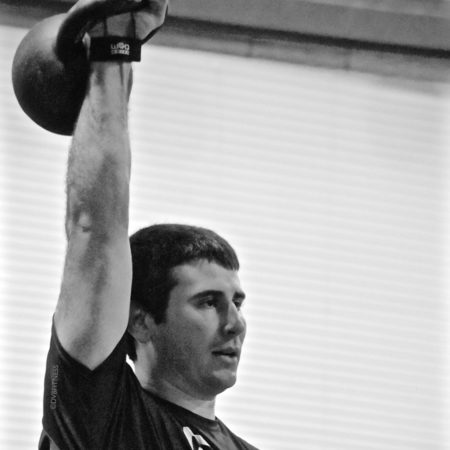
Leak: Losing the Shoulder-Hip Lateral Connection
Another common energy leak happens during the single-arm press. I have seen people miss their ½ or ⅓ bodyweight press during their SFG II and miss their Beast Tamer/Iron Maiden press. (I was one of those people.) I have also seen people just squeak out a press while ‘leaking.’ The leak is losing our lateral tie between shoulder and hip. You sometimes spot the leak in a poor crossbody connection. But I want to address the lack of strength in the same side connection. The way this particular leak presents itself is by opening up the same side oblique, or leaning the torso away from the weight as it moves upwards. Many factors can contribute to this leak: lack of focus, practicing bad habits, or lack of strength in our lateral muscles. I like to think most problems can be fixed by simply becoming stronger.
Plug the Leak with Single-Arm Farmer Carries
My go-to drill to help someone stop side-flexing as they press is to work on single-arm farmer carries. Now you want to go heavy with this drill, however, not so heavy that you can’t feel anything tied into place. You want to feel a strong connection between the working arm shoulder and the opposing hip. The obliques on the unloaded side should be firing as well. I see people practice single-arm carries with too heavy of a load which further patterns bad habits. You don’t develop skill-transfer when you butcher the drill. Focus on feeling the movements in all of the right places.
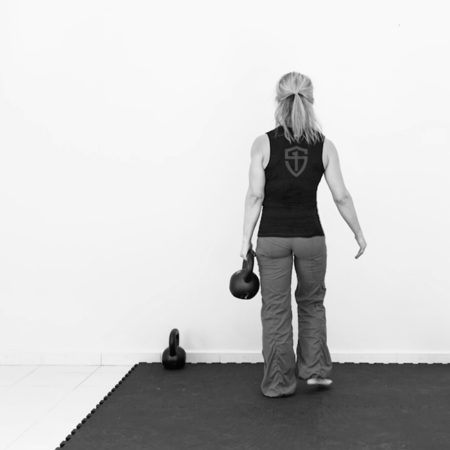
Plug the Leak with Hanging Single-Sided Shoulder Packing
Another drill that does a tremendous job of tying together your same-side shoulder and hip is the hanging single-sided shoulder pack drill. This drill is used to help solidify your position during hanging leg raises and pull-ups. It also enables you to create and feel more tension in places where leaks commonly occur.
Leak: Glute-less Pushups
Another common way that energy leaks present themselves is during a one-arm pushup. What you may see or feel is a loss of tension in just one of your glute cheeks. While a bit of self-inflicted palpation can help remedy the leak by drawing attention to the region, it’s usually only a temporary solution. Luckily, we have a few effective leak-plugging drills that almost instantly make you stronger.
Plug the Leak with Single-Leg Deadlifts
At a Bodyweight course a few years back, Master Instructor Phil Scarito used a single-leg deadlift to improve a one-arm pushup. The key is to pattern the movement and build strength using a heavy, contralaterally loaded weight (hold the kettlebell in the opposite hand of the leg that is doing the deadlift). Start with the skill (one-arm pushup). Then do the drill (single-leg deadlift). Remember to focus on the aspect of the skill that you are working to improve. In this case, it’s making sure both glutes are working in conjunction with your shoulders or successfully tying the “X” together as I like to say. Then work the skill again (one-arm pushup) to see if you’ve improved.
Plug the Leak with Single-Arm Swings
Another drill that helps to tie the “X” together or to make sure your glutes are firing is heavy single-arm swings. I like to perform anywhere from 5-10 reps focusing on cramping my glutes at the lockout. Once they feel locked in and like I am getting an even squeeze from both sides, I go back to the one-arm pushup. Play with your foot width during the swings and find what placement gives you the best feeling of glute activation. Apply that to your one-arm pushup position and see if that helps. Remember, it’s about trial and error, searching for what works for you.
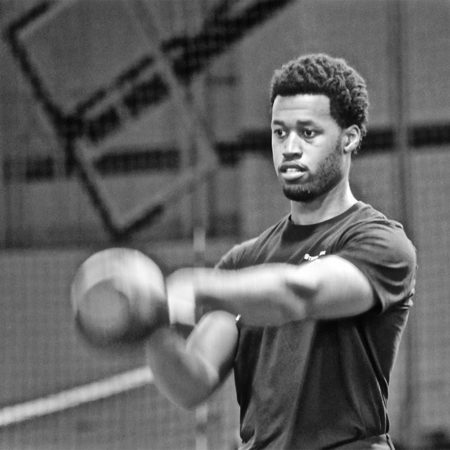
Leak: Flexing in the Deadlift or Extending in the Press
Another common energy leak is an inability to maintain a neutral spine in the sagittal plane (front to back movements). It presents itself as either going into flexion during a deadlift or extension during the barbell military press. While a lot of things can contribute to this, core weakness is a common culprit.
Plug the Leak with Double-Racked Farmer Carries
An often overlooked and underutilized movement is the double-racked farmer carry. Clean two heavy bells to their appropriate front racked position, and, while keeping a tall spine, walk around making sure to keep the work in your lats, shoulders, and abs, and nothing in your low back. Maintaining this vertical plank helps to create trunk rigidity which transfers nicely to many other skills. A word of wisdom: don’t pair these with a deadlift or overhead press day.

Plug the Leak with Double Kettlebell Swings
Another impressive skill that helps enhance your posture during deadlifts and barbell military presses is a heavy double kettlebell swing. The feedback is quick and ruthless: if you lose your vertical plank, the kettlebells pull you off of your feet. We do not want this. We want to root our feet into the ground and cement the vertical plank on every swing. Keeping a neutral spine throughout and finding the tension to keep us planted at the top of the swing transfer precisely to keeping our neutral posture throughout our deadlift and military press.
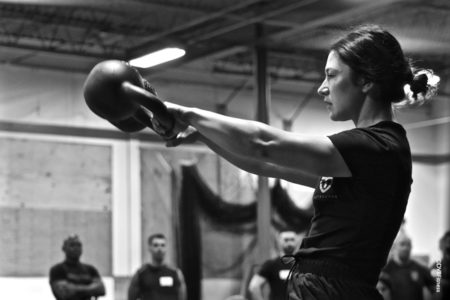
Leak: Mindlessness
The final common energy leaks are different as they result in the body but start in the mind. They are a lack of focus and lack of belief. Both result in loss of tension which robs us of strength and performance for the time being.
Plug the Leak with Focus and Belief
I remember during my Beast Tamer training, I was guilty of both of these energy leaks. I allowed energy to slip away due to a lack of focus. I tried doing it all. But that resulted in my losing focus on the goal. Also, I didn’t believe that I could press the Beast so I approached the bell timidly. I was afraid to clean the bell and get into the racked position, which stole my strength as I shied away from the tension needed. Do not let these two energy leaks knock you off the rails. Believe in yourself and trust in the process. If you focus on the task at hand, day in and day out, then the belief should appropriately follow suit.
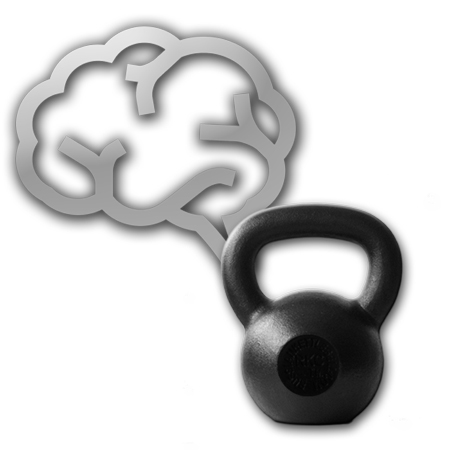
Conclusion
Something you may have noticed by now is how seamlessly barbell, kettlebell, and bodyweight skills work together. Each system feeds into the other. Learning how to do something better with the barbell, kettlebell or bodyweight transfers to the next tool. While it is never about the modality, certain tools can help you learn a skill better than others. And each person is going to be different so the deeper the bag you have, the better.
“An inch wide and a mile deep” is the way StrongFirst operates. Each course or certification you attend allows you to go deeper and deeper. Every new skill or drill increases your ability to spot and get rid of any energy leak you may come across. When you plug your leaks with strength and tension, you get instantly stronger. We all want that in the end because the opposite is not a desirable option.

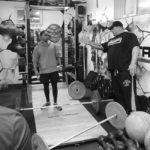
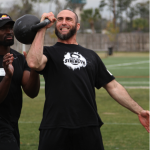


This is one of my all-time favourite articles! I think energy leaks is such a vital topic and you explained it beautifully and concisely.
I find that the most common leak in new students is by far mindlessness aka just repping out instead of focusing on technique. It’s easy to spot by noticing how the technique might be good in the first rep or two and then it’s rubbish for the rest of the reps. This teaches the body/mind more reps with bad technique than with good technique and so the mindlessness habit entrenches deeper. I find that the best remedy to that error is the ‘no rep’. You simply don’t give them a rep if it was a sloppy rep, so if they did 2 good ones and 3 sloppy ones, the record is 2 reps. Do you have your own methods of creating mindfulness habits?
I am definitely going to apply your recommended drills in my practice, both in my own training and my students. Even though I have been using several of the ones you mentioned, the points of focus you recommend for them are something that I haven’t used yet. The hanging hip-shoulder drill is something I have never tried at all. Looking forward to my next coaching/training session!
Thank you again, fantastic article!
Hi Ekaterina,
Thank you for the kind words, I am glad you enjoyed the article and found it useful.
For mindfulness, I am constantly reminding my students that the setup is the first rep and will reset them if I see them try to speed into a movement without paying attention to the setup. Also, counting their breath during certain trunk movements like a plank. I find that asking constantly for feedback such as how’d that feel, where’d you feel that, what do you think you could have done better, all of these questions makes them realize the awareness they need to have during the movement.
Fantastic article, Denzel, thank you!
Thank you! Glad you enjoyed it.
Excellent article, it’s really made me think about what I’m going in my kettlebell training,
Thanks, Phil
I appreciate it! Thanks
Thank you Denzel, this is very helpful!
Happy you found it helpful
Excellent article Denzel!
Thank you!
Cole
Thank you Cole!